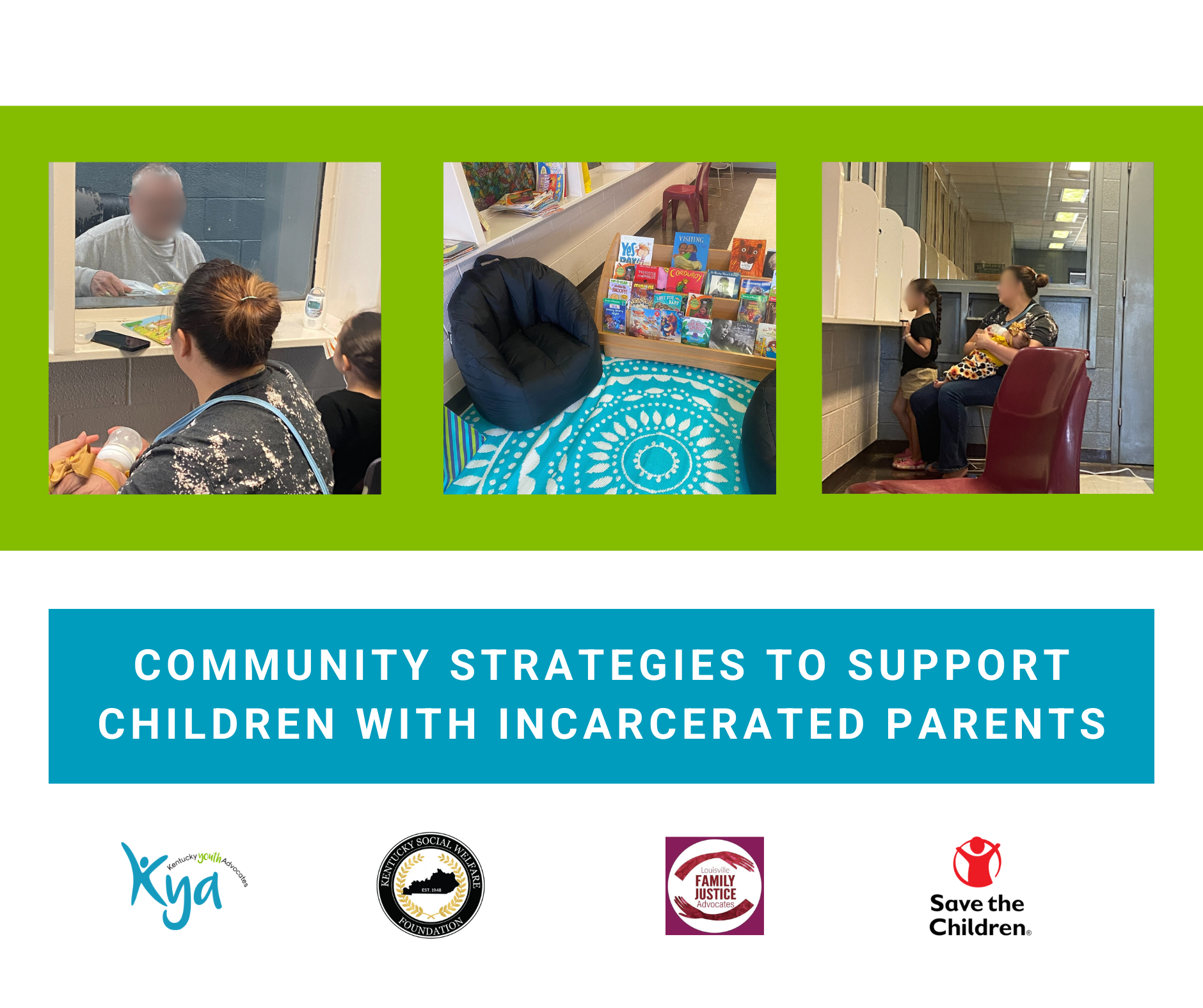By Amanda Bear
 Schools should be a safe, secure place for all children. A recent report released by Children’s Law Center, Inc. finds the use of restraint and seclusion on children in Kentucky schools is often unnecessary – especially for young children and/or students with a disability – and can be harmful.
Schools should be a safe, secure place for all children. A recent report released by Children’s Law Center, Inc. finds the use of restraint and seclusion on children in Kentucky schools is often unnecessary – especially for young children and/or students with a disability – and can be harmful.
At the November meeting of the Juvenile Justice Oversight Council, myself along with Lucy Heskins of Kentucky Protection and Advocacy and Mr. and Mrs. Brian Long, who are parent advocates, presented information regarding the current status of the restraint and seclusion regulations for public schools in Kentucky.
During CLC’s portion of the presentation, we shared the findings our report, School-based Restraint and Seclusion: Critical Next Steps to Protecting Kentucky’s Children. Kentucky’s regulation regarding restraint and seclusion became effective on February 1, 2013, but there are still strides that need to be made in application, transparency, and accountability.
The Kentucky Department of Education (KDE) data shows that Kentucky school children were restrained 5,985 times during the 2014-15 school year. The data also suggests student with disabilities and students of color are the most likely to be restrained and secluded. Youth with disabilities make up 58% of those restrained in Kentucky schools and were involved in 89.3% of the incidents of seclusion during the 2014-15 school year. Youth of color are significantly over-represented for both restraint and seclusion incidents during the 2014-25 school year, with reported incidents of restraints at nearly five times the rate of their white peers. We were particularly shocked to see that 60% of school restraints in Kentucky are students in the third grade and below.
The report, supported by Kentucky Protection and Advocacy and Kentucky Youth Advocates, sets forth critical next steps for school districts and KDE to ensure protection of Kentucky’s school children and staff when using restraint and seclusion. Among the recommendations for school districts is the full implementation of positive behavior interventions and supports (PBIS) and requiring accountability from school resource officers (SROs). The report recommends that KDE amend the regulation to allow itself to provide explicit oversight authority and to permit restraint and seclusion solely in instances where there is imminent danger of serious physical harm while defining “serious.”
The premise of any recommendation about the use of restraint and seclusion in schools or juvenile facilities should be focused on creating positive environments and providing supports so that restraint and seclusion are unnecessary. While Kentucky’s current regulations offer some protection from both restraint and seclusion, the regulations are only meaningful if they have effective enforcement and oversight.
Now is the time to reevaluate the next steps needed to ensure school safety for all students and staff.
Amanda Bear is the Managing Attorney of the Children’s Law Center (CLC) in Lexington, Kentucky. The Lexington office primarily serves children and youth in Central Kentucky, providing individual legal advocacy, and through public policy work, training and education, impact litigation, and juvenile defender support services, seeks to improve the systems that serve children. CLC offers services throughout Kentucky and collaborates with other organizations within the region and nationally on a variety of topics.
Read School-based Restraint and Seclusion: Critical Next Steps to Protecting Kentucky’s Children report here.






Leave A Comment